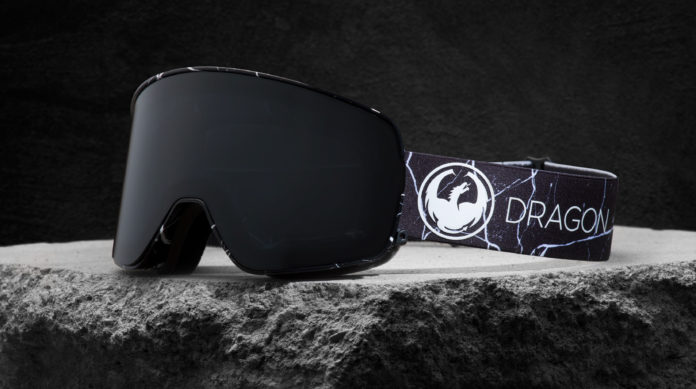Ski goggles are one of the most essential pieces of your ski gear. They provide the ability to differentiate snow forms, keep snow and wind out of your eyes, and most importantly, protect your eyes from harmful UV rays that bounce around on snow. Any good snow goggles will provide adequate UV protection, what makes a pair of goggles great is ease of use and performance.
If you find a pair of goggle that match up with your responses to the following questions, you’ll be in good hands.
- Do they fit my face?
- Are the lenses easily swapped?
- Do they come with multiple lenses?
Fitting a Pair of Goggles
One of the most important things to look for in a pair of goggles is fit. However its also the hardest to objectively decide on over the internet. Pending on your particular face shape, certain models simply might not work.
When trying on a pair of goggles for the first time, hold them up to your face with a little bit of pressure and check that the foam is in contact with your face all the way around. The aim is to have them feeling secure but gentle. How tight the strap is has a huge effect on the pressure the goggles exert on your face, so if they feel too tight, loosen it off a little.
Goggle Frame Size
When deciding on a pair of goggle, we normally start with frame size. Bigger frames have the advantage of generally providing better peripheral vision but can be uncomfortable for those with smaller faces. There currently aren’t standardised frame sizes, however most womens models can be classified as Small to Medium fit and Mens or Unisex models are anywhere from Small to Large Fit.
Small Goggle Frames
Many companies make a dedicated low profile goggle aimed at fitting smaller faces. The Anon WM1 is a great example of this. All of the tech of high end, bigger goggles, in a Small to Medium Frame size.
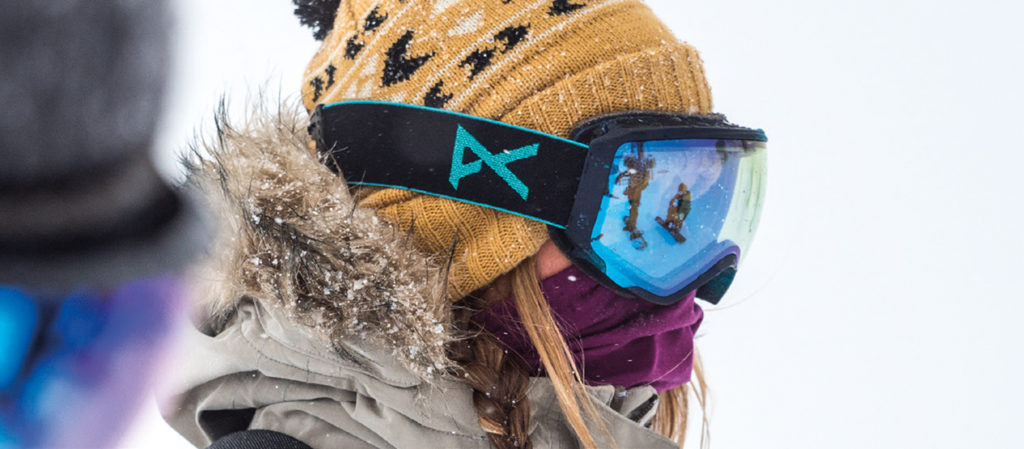
Medium Goggle Frames
The vast majority of people will enjoy a medium fitting goggle. Providing bigger range of vision, without the added bulk of a huge goggle. The Dragon NFX2 is a top selling mid sized option, super stylish goggles that still have easy interchange and great lens technology.
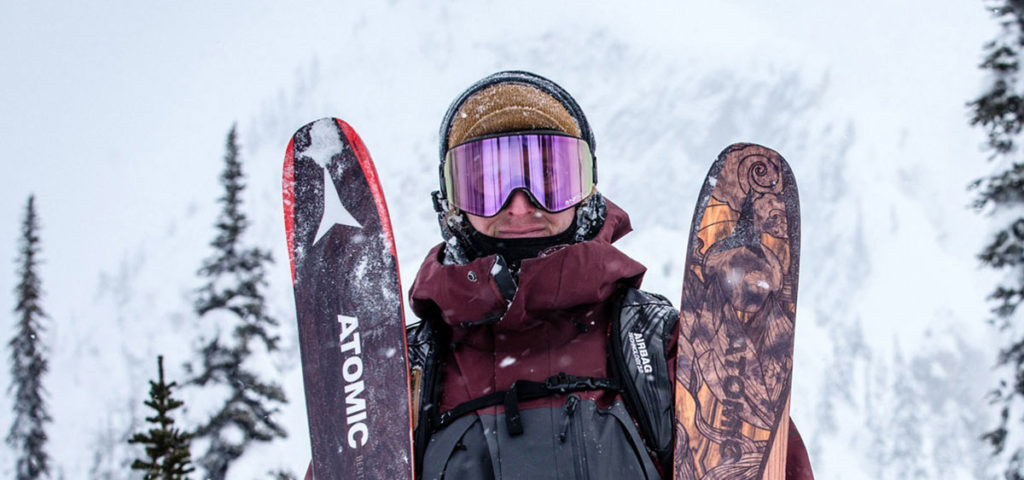
Large Goggle Frames
Big goggles have been a trend of the past 5 years, they aim to provide an unhindered field of vision by having a massive lens. For many people, the large frame are too big and push down on their noses when worn in conjunction with a helmet. The Dragon X2 is a great example of this style of frame. Dragon even know this themselves, and offer a smaller framed X2s for people who want the same style in a smaller frame.
Fit Features
Over the Glasses (OTG)
Most companies have goggles that are compatible with people who wear glasses while skiing. To allow the goggles to sit comfortably over the glasses, the goggles have to have a fair bit of room on the inside of the lens, so lower profile goggles often don’t work very well. The main alteration they make is a small gap in the frame to allow for the arms of the glasses.
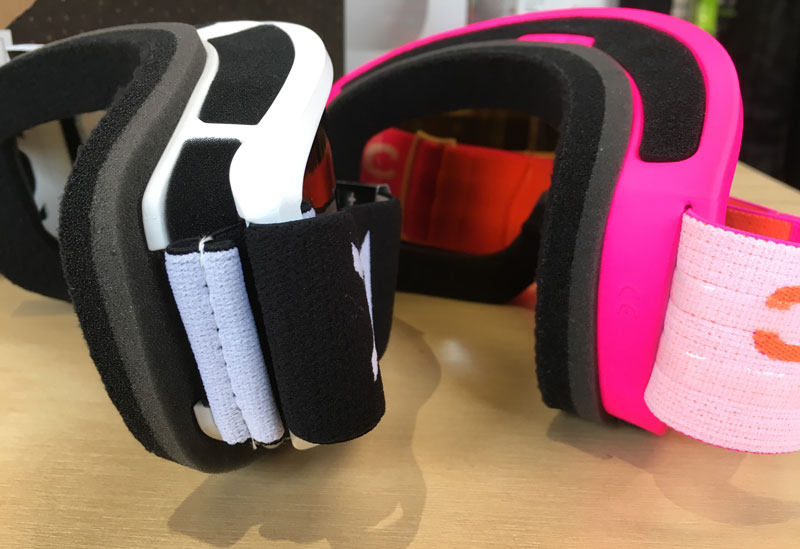
Asian Fit
For one reason or another, traditional goggle shapes don’t agree with the stereotypical face shape of Asian skiers. To counter this, goggle companies add an extra layer of padding around the nose area in ‘Asian Fit’ models. This often minimises any gap between the foam and the face that can lead to increased airflow through the goggles.
We have a limited supply of Asian Fit Goggles in the shop in the most popular styles and colours. if there is a particular model you are after, let us know and we can see what we can do.
Goggle Features
Goggles vary in price from sub $100 all the way up to close to $400. The difference between the two is the features that each pair comes with. The style of interchangeable lenses is the most significant difference between a good pair of goggles and a mediocre one.
Lens Interchangability
There are plenty of good systems out there nowadays, and each of them are different. We could write a whole article on the different methods of changing lenses. Essentially, the old style of pulling up from the top of the frame and then plucking the lens out one notch at a time is outdated. Most people buying these type of goggles have little to no intention of changing the lens.
The newer systems are amazing. Anon’s Magna-tech range tops the class, Salomon have a great locking system in the X-Max, Dragon feature Swift-Lock in a fair few of their goggles, and Giro have a whole range of cool lens changing options in their new ranges. Each technology make swapping lenses a breeze.
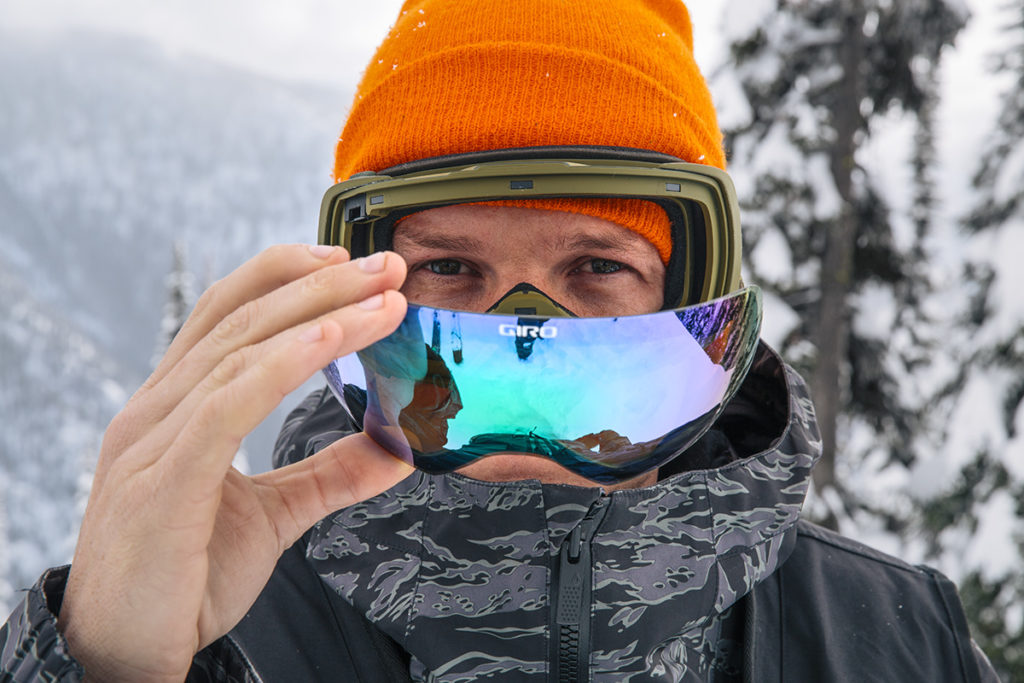
Our most popular top end goggle is the Anon M2, mainly because the lens is held in by MAGNETS! The 2 lenses that it comes with can be swapped in a heartbeat and without needing to touch the inside or outside of the lens. Not to mention it fits most peoples faces really nicely and is OTG compatible.
Goggle Accessories
Pretty much all goggles come stock with a microfibre bag that is useful for the the protection of the lens and cleaning of the lens. Most higher end goggles come stock with a hard goggle case as well. Useful for the protection of goggles and keeping all spare lenses organised. A handful of brands sell protective goggle cases on their own, the Dakine Goggle Stash is perfect for keeping your goggles and lenses in good nick while travelling.
Anon have an interesting concept brewing in their MFI Face masks. It is a range of Face masks that magnetically attach to the bottom of the goggle frames, eliminating any air gaps between goggle and neck warmer at all times. The face mask have strategic perforations to ensure that the air you breathe into it doesn’t shoot straight up into the goggles and fog them.
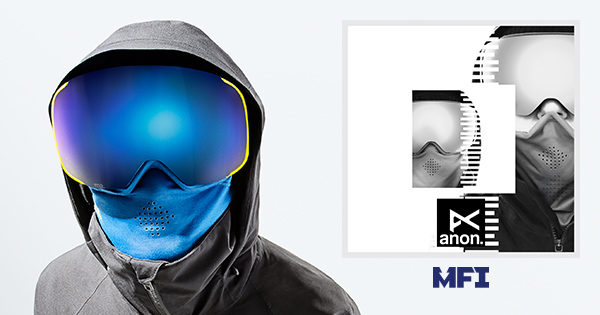
Goggle Lenses
Lenses is another huge topic in itself. A pair of goggles can have all the features in the world but one problem with the lens and the goggles are cooked.
Visible Light Transmission (VLT %)
All goggle lenses are classified on how much light they allow through and expressed as percentage between 0-100%. Lenses have 3 main categories based on VLT. These values are estimated based on averaging a couple brands that we stock.
S3: Sunny Lenses: <30% VLT
S3 lenses are best for days where it is bluebird conditions, aimed to reduce fatigue of the sun. They are often Grey, Brown and Green based and are relatively low contrast. Take a dark S3 lens out in blizzard conditions and you will have it rough.
S2: Mixed Condition Lenses: 30-60% VLT
Mid range lenses excel when the weather is neither here nor there. Aiming to still block the sun when it shines but providing contrast when the light drops. If you only want one lens to do it all, chances are an S2 lens will suit you.
S1: Low Light Lenses: >60% VLT
When the snow comes down, often its hard to distinguish between snow, sky and ice. Having a lens that lets as much light through and provides the much needed contrast helps.
Lens Colours
The Lens Base Colour is the tint that is applied to the base lens and is the colour you look through. The Base Tint of the lens can pretty much be any colour. Traditional lenses often feature brown, pink and yellow and newer models have grey, blue, and green bases. It is largely argued about different base colours being better for different conditions, however the VLT and Contrast are definitely the main two factors.
Lenses Outer coating colour has little to do with the performance of the goggles, but is what makes the goggles look sweet.
Contrast
Contrast is often overlooked but is a very important factor in picking lenses. A high intensity base tint will provide more contrast and will perform better in low light conditions.
There has been a ton of development in the area with the release of High Contrast lenses. Every brand seems to have one, Anon Sonar, Giro Vivid, and Dragon Lumalens to name a few. These lenses generally aim to increase the range of useable conditions by upping contrast but lowering the VLT of each lens.


